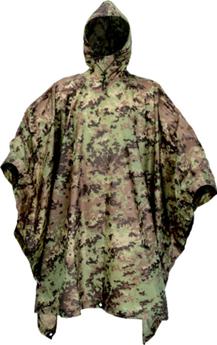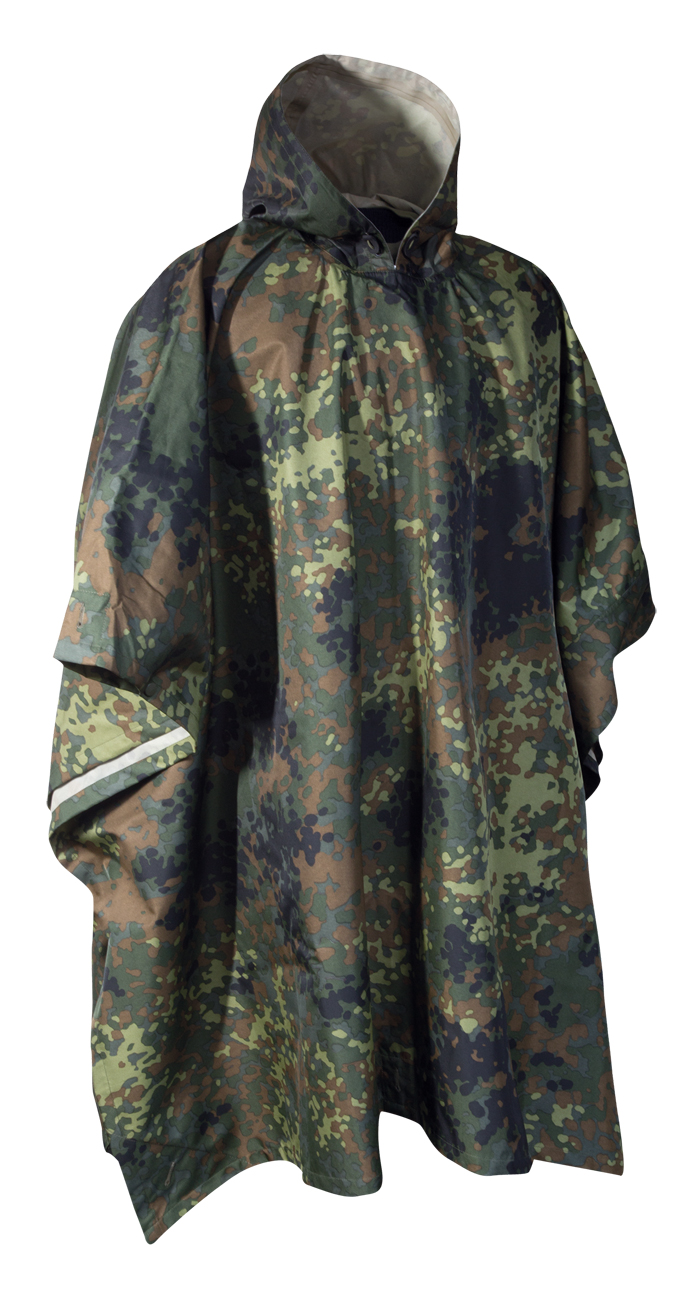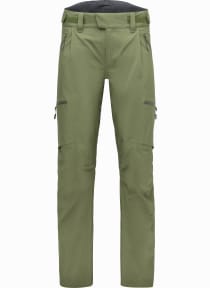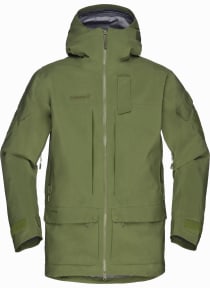If I want to go for total weather protection then it is the Swiss Army Poncho. If I want to go for your average hiker credibility then it is your standard waterproof jacket in all its alternatives and overtrousers. For the average day out it is a matter of comfort, that is to say permeable outside to the extent that you are comfortable on the inside and not too cold. Woolly pully on the inside or something that keeps your skin warm and dry.
Wet weather gear - kit talk
- Thread starter Paul_B
- Start date
-
Hey Guest, Early bird pricing on the Summer Moot (29th July - 10th August) available until April 6th, we'd love you to come. PLEASE CLICK HERE to early bird price and get more information.
You are using an out of date browser. It may not display this or other websites correctly.
You should upgrade or use an alternative browser.
You should upgrade or use an alternative browser.
If you want a total fortress of weather proofing try some thing in bri -nylon, make sure its a size up and you have a chain knit jumper in use ho and best on colder days! needless to say it dose not breath but can be made comfortable 
Interested to try this perhaps
https://workweargurus.com/products/blaklader-365-24-waterproof-gore-tex-jacket-48181420
https://workweargurus.com/products/blaklader-365-24-waterproof-gore-tex-jacket-48181420
Jeez! You can get endura Paramo jacket for that and it's top of their range and a more normal fit too!! The only benefit of that is reflective hi Vis for work places perhaps. Although at work is prefer a standard hi Vis work jacket in bright yellow and retro reflective.
Still trying to get up to Ambleside again to check out the paramo shop within a shop there I only found one type of jacket from Paramo in another shop up there. The shop within a shop shut very early compared to other shops so couldn't get in. Not many outdoor shops have Paramo these days or if they do it's not really waterproofs season yet so shops haven't built up stock of higher end stuff like Paramo I reckon.
Still trying to get up to Ambleside again to check out the paramo shop within a shop there I only found one type of jacket from Paramo in another shop up there. The shop within a shop shut very early compared to other shops so couldn't get in. Not many outdoor shops have Paramo these days or if they do it's not really waterproofs season yet so shops haven't built up stock of higher end stuff like Paramo I reckon.
In my opinion it's necessary to experiment with different layers.
I read in internet forums that a lot of people swear by merino wool base layers but I am only comfortable with them if the temperature is lower than 5*C.
I returned to relatively thin pure cotton T-shirts as base layer and little and thin cheap cotton breefs in most conditions.
Over that I usually wear a 20% polyester 80% cotton oliv green German army field shirt (how it is still delivered factory new only by A.Blöchel, Neuhaus am Inn) that is a midges proof pretty thick classical outdoor cotton shirt with buttoned flaps over the pockets. They both wick moisture away from my skin, but obviously I get some airflow in between them, which dryes them out a bit.
Over that I usually wear a light or middle thick polyester fleece jacket, usually open, in dry conditions I prefere over it a light field blouse, Flecktarn or Austrian, both 35% polyester, 65 % cotton, and in whet conditions I usually put directly the rain jacket over the polyester fleece jacket, sometimes over the field blouse which I don't carry always with me.
I avoid to put the relatively heavy field blouse into the rucksack but better works to wear the rain jacket directly over the fleece jacket.
Field blouse as outer layer over polyester fleece works OK in short showers, somehow the body heats the moisture out pretty fast. The thin field blouses are relatively fast drying but tight woven and so they are wind proof and if wet they get a bit water proof like the old cotton tent sheeds.
With closed rain jacked in use I reduce the speed of my movement. That's the secret in my opinion how to stay dry from inside.
I use cheaper light rain jackets as well as the German Army Goretex jacket and trousers which are made from Goretex three layer fabric. The Goretex suit works technically better than the light stuff which I carry if I expect mainly dry weather. But they work technically OK under 20 *C, perfectly under 16*C.
In warmer conditions I prefere the non breathing Italian army lightweight poncho Defcon 5.
168 x 200 cm, 350g weight without its little bag.

 www.defcon5italy.com
www.defcon5italy.com
(By the way: The German army currently uses a Flecktarn Goretex poncho additional to the Goretex suit. And this poncho is sold factory new to private users too.
150 X 220 cm, 860g
Price here for the factory new poncho:

 www.recon-company.com
www.recon-company.com
I don't own it because I find it too heavy and not wide enough, but because it's an interesting piece of equipment I mention it here.)
Or I simply wear very thin cotton or polyester cotton mix fabric clothing in hot conditions and have nothing against to get whet, because the clothing will dry pretty fast after the rain stopped.
I discovered that waterproof over trousers with pocket zippers but no own pockets are a very good idea, because if you open the zippers you will pump with every step the inner moisture outside. That works like opening the rain jacket for ventilation or the zippers under the arms (what my current rain jackets unfortunately don't have).
My lightweight Solognac 100 rain over trousers as well as my German army Flecktarn Goretex trousers have those pocket zippers without own pockets.
(My lightweight rain jacket is called Solognac 100 waterproof jacket, modern, civil looking, pretty short and unfortunately not very long lasting if used with heavy load. But I use it most of the time, because I prefere a very compact packing lightweight equipment and always have the Defcon 5 poncho with me which I use instead of a tarp as shelter in combination with the 350g Snugpak Special Forces bivvy bag, and so I have the poncho additional for heavy rain if I am hiking.)
I usually prefere a longer, the area of the underwear protecting, rain jacket and 35% polyester 65% cotton mix fabric trousers like Flecktarn or Solognac Steppe 300.
Until 0*C usually nothing else under them, if its colder thin merino long John's or often enough just rain over trousers over Steppe 300 because I don't have the long merino underwear with me. That works around 0 to -5*C pretty well if the zippers of the over trousers are open.
Since I have seen polyester cotton mix fabric trousers with long ventilation zippers at the back how they are offered by Scandinavian outdoor brands and a well known German workwear outfitter, I asked myself if that wouldn't be the best solution for waterproof trousers and I recently discovered that the special forces of Sweden, Norway and Denmark had the same idea and ordered it out of Norvegian production!

 www.norrona.com
www.norrona.com

 www.norrona.com
www.norrona.com
As you see that looks pretty convincing, but I unfortunately currently don't have the necessary pocket money to try this rain suit out immediatly.
Do cheaper versions exist somewhere which have those long ventilation zippers in the trousers too???
If not, I guess I will have to save some money to report later here if this rain suit works fine...
And, as we touch here factory new sold high end military rain suits in oliv green, I would like to know if somebody here uses this Carinthia PRG suit:
 www.carinthia.eu
www.carinthia.eu
 www.carinthia.eu
www.carinthia.eu
I read in internet forums that a lot of people swear by merino wool base layers but I am only comfortable with them if the temperature is lower than 5*C.
I returned to relatively thin pure cotton T-shirts as base layer and little and thin cheap cotton breefs in most conditions.
Over that I usually wear a 20% polyester 80% cotton oliv green German army field shirt (how it is still delivered factory new only by A.Blöchel, Neuhaus am Inn) that is a midges proof pretty thick classical outdoor cotton shirt with buttoned flaps over the pockets. They both wick moisture away from my skin, but obviously I get some airflow in between them, which dryes them out a bit.
Over that I usually wear a light or middle thick polyester fleece jacket, usually open, in dry conditions I prefere over it a light field blouse, Flecktarn or Austrian, both 35% polyester, 65 % cotton, and in whet conditions I usually put directly the rain jacket over the polyester fleece jacket, sometimes over the field blouse which I don't carry always with me.
I avoid to put the relatively heavy field blouse into the rucksack but better works to wear the rain jacket directly over the fleece jacket.
Field blouse as outer layer over polyester fleece works OK in short showers, somehow the body heats the moisture out pretty fast. The thin field blouses are relatively fast drying but tight woven and so they are wind proof and if wet they get a bit water proof like the old cotton tent sheeds.
With closed rain jacked in use I reduce the speed of my movement. That's the secret in my opinion how to stay dry from inside.
I use cheaper light rain jackets as well as the German Army Goretex jacket and trousers which are made from Goretex three layer fabric. The Goretex suit works technically better than the light stuff which I carry if I expect mainly dry weather. But they work technically OK under 20 *C, perfectly under 16*C.
In warmer conditions I prefere the non breathing Italian army lightweight poncho Defcon 5.
168 x 200 cm, 350g weight without its little bag.

DEFCON 5 WATER PONCHO - D5-PO-02 - Jackets - Defcon 5 Italy
D5-PO-02 - DEFCON 5 WATER PONCHO - Jackets
(By the way: The German army currently uses a Flecktarn Goretex poncho additional to the Goretex suit. And this poncho is sold factory new to private users too.
150 X 220 cm, 860g
Price here for the factory new poncho:

BW Poncho 3-lagen Laminat nach TL
BW Poncho nach TL aus 3-lagen Laminat. Das Material ist atmungsaktiv, wasserdicht und gemäß TL 8305-0290 mit einem IRR Schutz…
I don't own it because I find it too heavy and not wide enough, but because it's an interesting piece of equipment I mention it here.)
Or I simply wear very thin cotton or polyester cotton mix fabric clothing in hot conditions and have nothing against to get whet, because the clothing will dry pretty fast after the rain stopped.
I discovered that waterproof over trousers with pocket zippers but no own pockets are a very good idea, because if you open the zippers you will pump with every step the inner moisture outside. That works like opening the rain jacket for ventilation or the zippers under the arms (what my current rain jackets unfortunately don't have).
My lightweight Solognac 100 rain over trousers as well as my German army Flecktarn Goretex trousers have those pocket zippers without own pockets.
(My lightweight rain jacket is called Solognac 100 waterproof jacket, modern, civil looking, pretty short and unfortunately not very long lasting if used with heavy load. But I use it most of the time, because I prefere a very compact packing lightweight equipment and always have the Defcon 5 poncho with me which I use instead of a tarp as shelter in combination with the 350g Snugpak Special Forces bivvy bag, and so I have the poncho additional for heavy rain if I am hiking.)
I usually prefere a longer, the area of the underwear protecting, rain jacket and 35% polyester 65% cotton mix fabric trousers like Flecktarn or Solognac Steppe 300.
Until 0*C usually nothing else under them, if its colder thin merino long John's or often enough just rain over trousers over Steppe 300 because I don't have the long merino underwear with me. That works around 0 to -5*C pretty well if the zippers of the over trousers are open.
Since I have seen polyester cotton mix fabric trousers with long ventilation zippers at the back how they are offered by Scandinavian outdoor brands and a well known German workwear outfitter, I asked myself if that wouldn't be the best solution for waterproof trousers and I recently discovered that the special forces of Sweden, Norway and Denmark had the same idea and ordered it out of Norvegian production!

Norrøna recon Gore-Tex Pro Pants for men and women
The fourth generation recon Gore-Tex Pro pants are a redesigned version of our now legendary heavyweight Gore-Tex Pro pants and truly one of the finest waterproof, windproof and breathable outer shells on the marked.

Norrøna recon Gore-Tex Pro Hunting Jacket for men and women
The recon Gore-Tex Pro Jacket is designed to meet all the requirements set by the military and is suitable for all-round hunting, expeditions, glacier walking, trekking and general outdoor pursuits.
As you see that looks pretty convincing, but I unfortunately currently don't have the necessary pocket money to try this rain suit out immediatly.
Do cheaper versions exist somewhere which have those long ventilation zippers in the trousers too???
If not, I guess I will have to save some money to report later here if this rain suit works fine...
And, as we touch here factory new sold high end military rain suits in oliv green, I would like to know if somebody here uses this Carinthia PRG suit:
PRG Jacket | Carinthia Webshop
PRG Trousers | Carinthia Webshop
Last edited:
I have a Recon, bought it pre-owned about ten, twelve years ago. Lovely handsome thing it is, and draws compliments, especially from Scadinavians. It is very heavy and costs a ton of money too, though. No! Two tons. I don't use it for other than occasional ski trips when the fancy takes me or, otherwise, general low output, standing around kinds of activity.
There is a shed of options out there, Paramo, Fjallraven, Ventile (single and double), Barbour, Goretex of different weights, softshell/fleece arrangements. Just mix and match and rock and roll. They are all a bit different. But, I always feel you simply can't predict the weather or what type of wind, snow, rain combination you are going to get, or its duration or density .. so, I don't see a lot of point in fussing to the nth degree what jacket you are going to take out. Just take something that might work.
I partickerly like the Arcteryx Alpha F1 and its big bad shed of a partner the Alpha AR, and the Norvan. Got to get them used though, as they too cost a half a year's wages.
There is a shed of options out there, Paramo, Fjallraven, Ventile (single and double), Barbour, Goretex of different weights, softshell/fleece arrangements. Just mix and match and rock and roll. They are all a bit different. But, I always feel you simply can't predict the weather or what type of wind, snow, rain combination you are going to get, or its duration or density .. so, I don't see a lot of point in fussing to the nth degree what jacket you are going to take out. Just take something that might work.
I partickerly like the Arcteryx Alpha F1 and its big bad shed of a partner the Alpha AR, and the Norvan. Got to get them used though, as they too cost a half a year's wages.
Last edited:
What can you find in a ship's chandler for waterproof work clothing? That's where I'd go first.
Came home with a 4X large "offshore sailing coat" with functional wrist seals when you needed them.
Real sealed pockets which do stay dry (5" rain that weekend and I was out 8 hrs per day.)
Expensive. Very roomy for any other layers of clothing that I might wish.
I gave away the pants to my SIL who works outdoors mostly. Baggy bib-fronts.
Came home with a 4X large "offshore sailing coat" with functional wrist seals when you needed them.
Real sealed pockets which do stay dry (5" rain that weekend and I was out 8 hrs per day.)
Expensive. Very roomy for any other layers of clothing that I might wish.
I gave away the pants to my SIL who works outdoors mostly. Baggy bib-fronts.
On board you can change the layers below. If hiking you don't carry them with you if possible and even if you do so, you can't dry them if it rains.
That's pretty different, isn't it?
That's pretty different, isn't it?
@Billy-o
The Carinthia rainsuit PRG is a bit but not much lighter than the Norrona Recon. And Carinthia sells another heavier one too, designed by the British army if I remember right with more larger pockets.
I know that compared with other surplus military Goretex suits the German Flecktarn suit is relatively light, because it has a simple cut.
I forgot the exact weight but I will put it on the electronic scales in the next two weeks when I will go next time home to Berlin where I currently store it because I went to my brothers farm in order to wear off some old clothing and so I don't have the good stuff with me.
Am I right if I think that the ventilation zippers of the Norrona Recon trousers help effectively to avoid heat accumulation if they are open?
Are you able to dry out the layers below if you open this zippers after the rain stopped?
The Carinthia rainsuit PRG is a bit but not much lighter than the Norrona Recon. And Carinthia sells another heavier one too, designed by the British army if I remember right with more larger pockets.
I know that compared with other surplus military Goretex suits the German Flecktarn suit is relatively light, because it has a simple cut.
I forgot the exact weight but I will put it on the electronic scales in the next two weeks when I will go next time home to Berlin where I currently store it because I went to my brothers farm in order to wear off some old clothing and so I don't have the good stuff with me.
Am I right if I think that the ventilation zippers of the Norrona Recon trousers help effectively to avoid heat accumulation if they are open?
Are you able to dry out the layers below if you open this zippers after the rain stopped?
Last edited:
I never wanted to get into the problem of drying wet clothes. On the water, I could get soaked on the finest of days. The spectre of hypothermia was always on everyone's mind. Stay dry. The fishing clothes that I bought seemed to ventilate better than anything else.
Hiking here in winter, you can climb right though the freezing level. Then, your shell freezes to your next dry layer.
Drier is better than any damp.
Hiking here in winter, you can climb right though the freezing level. Then, your shell freezes to your next dry layer.
Drier is better than any damp.
I use home made Ventile for most rain.
Torrential rain - I break out a cheapo waterproof poncho to wear over the Ventile.
Torrential rain - I break out a cheapo waterproof poncho to wear over the Ventile.
Yep I'm not keen on softshells. I don't like the heavy feeling you get, and when they start to dry out I've always felt cold, I feel this is the most important thing about wet weather gear, it's not about keeping you bone dry, but stopping you from getting cold (as much as possible anyways!)
I have a cheap hardshell. It's the 2.5 layer kind of stuff, 2 hard layers and a mesh layer, I feel like for the money they are great. However I tend to do a lot of fishing and the like so not as active, I used to have a mountain equipment morpheus and that was amazing with 3 layer goretex but obviously a lot more money, I think a mesh layer would have still benefited it too, it just takes the hard layers away from your skin and allows it to breath a little more.
I have a cheap hardshell. It's the 2.5 layer kind of stuff, 2 hard layers and a mesh layer, I feel like for the money they are great. However I tend to do a lot of fishing and the like so not as active, I used to have a mountain equipment morpheus and that was amazing with 3 layer goretex but obviously a lot more money, I think a mesh layer would have still benefited it too, it just takes the hard layers away from your skin and allows it to breath a little more.
Gore-tex bottoms always. I dislike waterproof trousers and only put them on if truly needed.
Yes to this. I prefer shorts, even when it is getting pretty nippy, to waterproof trousers.
@Billy-o
Am I right if I think that the ventilation zippers of the Norrona Recon trousers help effectively to avoid heat accumulation if they are open?
There's a school of thought, Erbswurst, that says heat dumping too enthusiastically will interfere with your heat/humidity gradient. Personally, I say boo, if you are too hot, you are too hot and have to do something about it. But, the wet heat inside the garment is what drives the water out. (Different to softshell, paramo, buffalo, capilliary-type arrangements). All 'in theory', of course
Last edited:
I think it's a fault to concentrate mainly on the function of the membrane. If I get hot and sweaty I just open the jacket instead of pressing the moisture through tiny holes in the membrane. And I guess the price of the waterproof zippers is the main reason why most cheaper rain trousers don't have such ventilation zippers.
But as I wrote usual pocket zippers without own pockets in the waterproof trousers are working very well too, they just need to be protected under the rain jacket.
But as I wrote usual pocket zippers without own pockets in the waterproof trousers are working very well too, they just need to be protected under the rain jacket.
Being a budget bushcrafter I am limited in my choices to have at my disposal two items, the venerable poncho and a greenland wax impregnated DPM windproof smock of which I have proved in windblown rain up on Dartmoor, it works. I also have a DPM Goretex suit, but I rarely use that as , well no pockets and it's not that breathable anyway, to be cloyingly annoying.
I have also recently got my paws on a pre owned Rohan Pampas mk 2 jacket featuring something called 'Epic' involving something called silicone encaspsulation, ( Epic by Nextec silicone encapsulation) , to not know how useful that jacket will be in rain yet.
But in general, if it's raining I don't go out unless I really have to.
The best thing I had was a Survival Aids double Ventile Arctic Ranger, but my mother tossed it in the bin because she thought it looked tatty.
I have also recently got my paws on a pre owned Rohan Pampas mk 2 jacket featuring something called 'Epic' involving something called silicone encaspsulation, ( Epic by Nextec silicone encapsulation) , to not know how useful that jacket will be in rain yet.
But in general, if it's raining I don't go out unless I really have to.
The best thing I had was a Survival Aids double Ventile Arctic Ranger, but my mother tossed it in the bin because she thought it looked tatty.
Epic was on a special version of Montane Extreme smock. A stiff fabric with more weather resistance. IIRC it was a cotton (ventile) or part cotton (ventile like) fabric which makes sense for Arctic or cold weather use I suppose. I think it isn't completely waterproof and a bit boil in the bag. It certainly never took off as an outdoor kit waterproof fabric.
I'd be interested in hearing how you find it in use.
I'd be interested in hearing how you find it in use.
Epic was on a special version of Montane Extreme smock. A stiff fabric with more weather resistance. IIRC it was a cotton (ventile) or part cotton (ventile like) fabric which makes sense for Arctic or cold weather use I suppose. I think it isn't completely waterproof and a bit boil in the bag. It certainly never took off as an outdoor kit waterproof fabric.
I'd be interested in hearing how you find it in use.
The double Ventile, initially had a hydrophobic coating on it of eventually wore off for the Ventile fabric to be properly tested in plenty of heavy rain out on the hills to only experience dampness on the inner Ventile layer around the arms and shoulders, saying that yes water did penetrate the jacket but not to soak just create a cold damp patch in the places it had come through. And yes from time to time I did soak silicone waterproofing fluid into it, for it to stink for as long as the water repellency held ( it always broke down first in the areas of the fabric subject to movement and abrasion)
In addition it does have to be said when the outer layer was thoroughly soaked through, the jacket became heavy and stiff for myself to have done it on at least one occasion, stood the jacket up in the corner, but in that state rain does run off, of which perhaps is all it can do when something is waterlogged beyond any damp induced impermeability
What I concluded at the time after wearing double Ventile on Britain's hills in the usual wet weather for about five years I had the jacket was that though Ventile is immensely comfortable to wear when it's dry, to also be stunningly windproof, it's not the solution I was seeking, to have since found a combat smock made using a tight weave cotton can be as good, for the clue to Ventile is that tight weave cotton of which swells when it's wet for all cotton to do that, but it does have to be wet to swell of which then brings in the stiffness and potential to dampen inner layers. To have pondered a double layer of tight weave cotton on a combat smock, but instead I cheaply cooked wax into the thing to report I only have to do it once a year.
To after having tried both Ventile and Taslan Goretex concluded the solution in terms of water repellent shell garments for myself at least is some kind of breathable fabric of which one has to waterproof with wax or silicone, hence combat jacket, to also carry my poncho for really wet stuff and yes it can be a p.i.t.a in windy weather, to need to 'belt it' but the hardly fashionable but functional poncho is the ultimate breathable waterproof and so cheap in comparison and in terms of bush craft, the poncho has other uses.
And if any are interested in the venerable poncho, check out the Snugpak Enhanced Patrol Poncho, for how good they can be.
Oh dammit, after writing all that above, I realise it was not the Ventile I have five years practical experience of, you wished to know about to have considered deleting, but no, practical experience is useful so I will leave it up there.Epic was on a special version of Montane Extreme smock. A stiff fabric with more weather resistance. IIRC it was a cotton (ventile) or part cotton (ventile like) fabric which makes sense for Arctic or cold weather use I suppose. I think it isn't completely waterproof and a bit boil in the bag. It certainly never took off as an outdoor kit waterproof fabric.
I'd be interested in hearing how you find it in use.
And yes I have to test the epic stuff properly to understand it's limitations, if I can be coaxed out in the rain, but suffice to say, the jacket I purchased the seller said it was unworn to in effect be new and it looks it to have bought a new Pampas albeit Mk2 for relative peanuts.
Similar threads
- Replies
- 24
- Views
- 736
- Replies
- 3
- Views
- 210
- Replies
- 37
- Views
- 3K
- Replies
- 7
- Views
- 573
